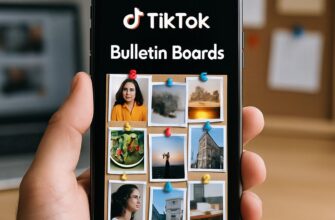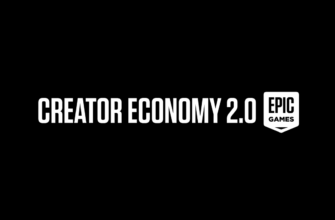The short-form video landscape that once rewarded 15-second gimmicks has matured into something more deliberate and human. Audiences now expect stories that fit their lives, not just attention-grabbing stunts, and platforms are adjusting accordingly. This shift—call it the short-form video evolution 2025: beyond 15 seconds, more narrative, deeper engagement—changes how creators, brands, and engineers think about time, pacing, and measurement.
- Why 15 seconds no longer defines short-form
- The new narrative economy: stories that breathe
- Platform design shifts that enable longer shorts
- Creator strategies: pacing, hooks, serialized storytelling
- Monetization and analytics: deeper engagement, better metrics
- Brand and advertiser approaches: from stunts to story arcs
- Technical and production implications: tools, editing, sound
- What audiences want in 2025: attention with context
- How to get started: practical steps for creators and brands
- Final notes on the craft of compact storytelling
Why 15 seconds no longer defines short-form
Fifteen seconds served an important role: it taught creators how to hook fast and economize every frame. But attention is not monolithic, and people are willing to invest more time when the content promises payoff. The cultural moment shifted: viewers traded endless skimming for mini-commitments when those moments delivered context, emotion, or utility.
Platforms responded. Autoplay algorithms that once prioritized immediate likes now incorporate viewing depth and repeat watches into ranking signals. That subtle technical change means a well-paced 45- to 90-second clip can outperform a flashy 15-second hit if it earns sustained attention.
For creators, the opportunity is practical. Expanding beyond an arbitrary limit opens narrative techniques—setups, payoffs, callbacks—that were previously difficult to execute. The result is short-form that borrows television’s storytelling discipline without becoming longform television itself.
The new narrative economy: stories that breathe

Narrative matters because people remember things wrapped in cause-and-effect or emotional arcs. A micro-story with a clear beginning, middle, and end feels satisfying, even if it fits in under two minutes. That satisfaction increases shareability and drives the kind of comments and saves that platforms now prize.
Serial formats are a particularly effective narrative structure. A five-episode arc of 30–60 second videos creates appointment viewing within feeds: viewers return to see the next installment, and creators gain predictable momentum. I experimented with a serialized cooking series last year; audience retention rose simply because people wanted to see the process conclude.
But narrative doesn’t have to be elaborate. Small arcs—an unexpected twist, a reveal, or a concise lesson—are enough to transform a clip from a passing flicker into an experience people remember. That memory converts into stronger engagement metrics and, ultimately, audience loyalty.
Platform design shifts that enable longer shorts
Design choices drive behavior. Platforms extended maximum clip lengths, introduced chapter markers, and added watch-later queues that favor slightly longer content. These interface elements reduce friction for viewers who want to pause, come back, or binge a creator’s short series.
Recommendation systems moved beyond simple recency and like counts. Signals like average watch time per minute, rewatches, comments, and cross-video completion rates are now part of the mix. Those metrics reward content that earns attention over many seconds rather than fleeting clicks.
Creators should pay attention to these back-end changes because they subtly shift what “success” looks like. The posts that once went viral by accident will now be joined—or displaced—by thoughtfully paced pieces that reward and engage viewers for longer stretches.
Creator strategies: pacing, hooks, serialized storytelling
Longer shorts require rethinking the hook. You still need an immediate reason to watch, but the hook can be layered: a visual grab at zero seconds, a question at five seconds, and a payoff at thirty. The skill is in pacing the reveal so that curiosity is satisfied gradually rather than all at once.
Serialized storytelling demands planning. Treat each short as a chapter with its own mini-arc while contributing to the larger narrative. I mapped a six-part DIY series on a whiteboard and scheduled filming in clusters; that discipline reduced friction and improved consistency.
Editing choices change, too. Transitions that once served to compress time now become narrative devices. A jump cut can signal surprise; a lingering shot can build tension. Sound design matters more when you have time to develop mood, so simple score choices or ambient sounds can elevate a short dramatically.
Finally, community interaction becomes content. Polls, replies that continue stories, and viewer-submitted clips make audiences co-authors. When people feel part of a narrative, watch time and advocacy climb together.
Monetization and analytics: deeper engagement, better metrics

Monetization models are aligning with engagement quality rather than raw views. Platforms and advertisers increasingly pay for meaningful actions—saves, shares, conversions—rather than impressions alone. That’s good news for creators who craft content that retains attention and prompts interaction.
Analytics became more narrative-friendly. Heatmaps and chapter-level retention data let creators see exactly where viewers drift or return. This information makes iterative improvement possible without guesswork and encourages longer-form techniques that hold attention.
| Old focus | New focus (2025) |
|---|---|
| Total views | Average watch time, rewatches, and completion rate |
| Click-through peak | Retention across episodes and cross-video pathways |
| One-off virality | Recurring audience and community signals |
For creators, the business implication is clear: prioritize formats and series that generate repeat engagement. For advertisers, the lesson is to value context and narrative adjacency over single-pass exposure.
Brand and advertiser approaches: from stunts to story arcs
Brands are shifting from one-off stunts to episodic campaigns that mirror entertainment storytelling. Instead of a single flashy product demo, marketers now build short arcs that introduce a character, present a problem, and show the product as part of the solution across multiple clips.
That approach isn’t just more authentic; it’s measurable. Brands can trace how narratives influence sentiment and purchase intent over time, rather than relying on momentary spikes. Early adopters report stronger brand recall when content is serialized and emotionally resonant.
Agencies also need new tooling and creative disciplines. Scriptwriters familiar with micro-drama, lighting and sound technicians who can work on short schedules, and editors who think in episodes become valuable assets. The creative brief now often includes a three-part release schedule and engagement milestones, not just a single publish date.
Technical and production implications: tools, editing, sound
The production toolkit for short-form evolved too. Mobile apps now include chapter markers, non-destructive editing across multiple pieces, and templates designed for multi-episode continuity. These features shorten turnaround time and make serialized production feasible for small teams.
Sound designers and music supervisors are back in demand because sonic continuity stitches episodes together. A tight audio motif can act like a theme song, signaling a series and boosting recognition. Simple, consistent audio cues also help viewers locate where they left off in a narrative.
On the technical side, adaptive bitrate and smart caching reduce startup penalties for longer short-form videos. That helps maintain watch time on slower connections, which is critical when asking viewers to commit more than a fleeting few seconds.
What audiences want in 2025: attention with context
Audiences are showing a willingness to invest attention when they receive clear context. They want to understand the stakes quickly and see a believable payoff. That appetite favors creators who can condense meaningful arcs into compact formats without sacrificing emotional or informational depth.
Different demographics seek different textures. Younger viewers still appreciate humor and immediacy, but many of them also follow serialized creators and topic-driven channels that reward continued viewing. Older audiences are showing up for educational short-form content that teaches in digestible episodes.
Respecting viewer time becomes the golden rule. Every extra second must earn its keep, which means ruthless editing and an insistence on relevance. If the content doesn’t advance the story or the value proposition, it should go.
How to get started: practical steps for creators and brands
If you’re a creator, start by reworking one piece of content into a three-part series. Outline the micro-arcs and map production so that episodes can be filmed together. This method reduces setup costs and produces consistent releases.
Brands should pilot a short episodic campaign with clear KPIs tied to engagement, not vanity metrics. Test creative variants in small markets and use chapter-level analytics to see where viewers drop off. Iterate based on those signals before scaling.
Here are practical steps to launch:
- Choose a central narrative or theme that can sustain multiple episodes.
- Create a concise format and stick to it across posts.
- Use early analytics to refine pacing and hook placement.
- Encourage audience participation to build community momentum.
Final notes on the craft of compact storytelling
Short-form video in 2025 is less about squeezing everything into a single instant and more about arranging moments so they form a satisfying whole. Creators who master pacing and serialization convert casual viewers into repeat watchers, and platforms that reward that behavior will continue to evolve.
The future favors work that balances brevity with depth: pieces that are short enough to fit a commute but long enough to tell a story worth remembering. That balance is the new craft, and the teams who learn it will shape how we define entertainment on our phones.
To explore more analysis and practical guides on this shift, visit https://news-ads.com/ and read other materials from our website.







